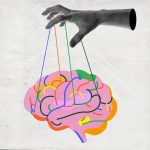Identify Learning Objectives:
Learning objectives are statements that describe what students should know and be able to do by the end of a lesson. Teachers and students can work together to identify learning objectives by discussing the purpose and what students should be able to demonstrate at the end of the lesson. Teachers can also provide guidance by using curriculum standards and objectives.
After learning objectives have been identified, teachers and students can brainstorm activities that will help students achieve those objectives. Teachers can provide guidance and suggestions, but students should be encouraged to share their own ideas and perspectives. This can be done through class discussions, small group activities, or individual brainstorming sessions.
Plan and Implement Activities:
Following the activities, teachers and students should look to work together to plan and implement those activities. This involves deciding on the materials needed, the sequence of activities, and the roles and responsibilities of each student. Teachers can provide guidance and support, but students should have ownership of the planning process.
Reflect and Evaluate:
Prior to the end of the class, teachers and students can take the opportunity to reflect on the experience of the activities. This involves discussing what went well, what could be improved, and how the lesson could be modified in the future. Teachers can use this feedback to inform future lesson planning and to adjust the activities or teaching methods.
Co-creating lesson planning with students can be a powerful way to engage students in the learning process, promote collaboration and critical thinking skills, and can create a personalized learning experience. By involving students in the planning process, teachers can also gain valuable insights into their student’s interests and learning needs, which can help with their future lesson planning.

Common challenges when co-creating lesson plans
Co-creating lesson plans with students can be a rewarding process, but it can also present some challenges for teachers.
- Time Constraints: Co-creating lesson plans with students can be time-consuming, and teachers may struggle to find the time to involve students in the planning process while still meeting curriculum requirements.
- Different Learning Needs: Students in the same class may have different learning needs, interests, and abilities. Teachers may find it challenging to create lessons that meet the needs of all students while still co-creating the lesson plan with them.
- Resistance to Change: Some students may be resistant to co-creating lesson plans with their teachers, especially if they are used to more traditional teaching methods. Teachers may need to work to build a culture of collaboration and encourage students to share their ideas and perspectives.
- Lack of Resources: Co-creating lesson plans with students may require additional resources, such as materials, technology, or outside experts. Teachers may struggle to obtain these resources, especially in schools with limited budgets.
- Balancing Teacher and Student Input: Teachers may find it challenging to balance their own ideas and expertise with the input of their students. Teachers may need to find a way to incorporate student input while still meeting curriculum requirements and ensuring that lessons are effective.
- Accountability: Co-creating lesson plans with students can raise questions about accountability. Teachers may need to find a way to ensure that students are meeting learning objectives while still allowing for student input and creativity.
Despite these challenges, developing lesson plans with students can be a powerful way to engage students in the learning process. Teachers can work to overcome these challenges by setting clear expectations, building a collaborative classroom culture, and seeking out resources and support as needed.









